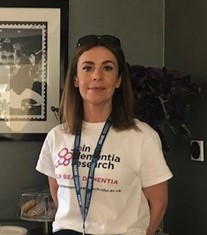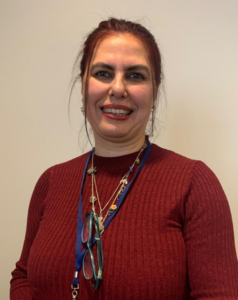
New members the NIHR Oxford and Oxford Health BRCs’ Diversity in Research group attended a meeting on 31 January to learn about the work of the two BRCs and how they can play a crucial role in making research more reflective of the society it seeks to help.
The Diversity in Research Group was set up in 2021 as a way of making involvement in health research more engaging to diverse communities, especially those not usually involved in research.
The group works with researchers from both BRCs to help them reach different communities, make research more inclusive and attract a wider and more representative range of participants to their studies.
The group has now been expanded to 23 members, 13 of whom are new. The members have strong links with groups that support refugees, homeless people, transgender people, Black African, Asian and Caribbean communities and mental health charities in Oxfordshire, Buckinghamshire or West Berkshire.
“It was very inspiring to see the new members of our expanded Diversity in Research Group engaging with researchers and being enthused about being able to influence our research,” said Rachel Taylor, the Oxford BRC’s Public and Community Involvement, Engagement and Participation (PCIEP) lead.
“Since it was set up, the Diversity in Research Group has had a positive impact on the work of the two BRCs. Researchers from many themes have sought to engage with the group to make their studies more inclusive – whether that’s by adapting the language they use or better understanding the concerns of different communities. We are finding that by talking to our Diversity in Research Group, our research teams are better understanding the barriers that might stop certain communities taking part and adapting their recruitment accordingly.”

Cora Reilly-McGeown, PPIEP Manager at Oxford Health BRC, added: “I am delighted to be working with the Diversity in Research Group members. We will actively listen to and incorporate the perspectives of the group members into mental health research, design and implementation of studies. This will lead us to more impactful results that will benefit everyone.”
The event, held at the Saïd Business School, was an opportunity for the new members to meet other members of the group and researchers to learn about how their insight can play a crucial role in designing, conducting and evaluating studies.

One of the new members of the group is Rana Ibrahim, director of the Oxford-based Community Interest Company Iraqi Women Art and War, a project that gives women who have been affected by conflict an opportunity to process their experiences and tell their stories through art, fashion and food.
She said: “This is a new type of collaboration for me, and I found it very educational, down to earth, accessible, and people are really positive to engage with each other.
“There’s always a gap between the community and academia, for different reasons. It’s a different language, people tend to isolate in their own groups. The Diversity in Research Group offers a bridge which is what I’m also trying to do myself with my organisation.”
One of the speakers at the event was Professor Matt Costa, who leads the Oxford BRC Musculoskeletal Theme. Its work has been designed in close collaboration with patient groups.
“It’s vital that patients help to shape our research – setting the agenda for what research is carried out and being involved in its delivery – so that the research remains focused on what’s important to the patients, rather than that researchers think is important. And that’s been a central tenet of our theme’s work,” Professor Costa explained.
“Some patients who have traditionally been excluded from research may have even more benefit from new treatments and interventions. Until recently, most research done on hip fractures excluded patients with cognitive impairments, but they represent more than 25 per cent of patients with hip fractures, because if you have dementia or delirium, you’re more likely to fall over and break your hip.
“So, we now have a well-established patient and public involvement group to specifically address this issue and ensure this group of patients are not excluded and can shape the research we do.”
Among the studies that have benefited from input from the Diversity in Research Group is the NewDAWN study, which aims to find out whether offering people a new treatment service can help more type 2 diabetes patients achieve remission than the current treatment offered by the NHS. Members of the Diversity in Research Group not only gave their perspective on managing type 2 diabetes and weight loss interventions they had tried, but also gave feedback on the information that the study team planned to communicate to participants.

